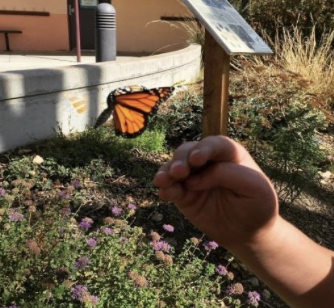|
The best way to raise a new generation that will care about - and act to protect nature - is to provide frequent experiences in the natural world. Schoolyards are critical spaces for educating and inspiring the next generation of environmental stewards. Adults can learn that they can play a role in providing habitats by their choices of how they landscape, and that they can be environmental stewards as well. Living Classroom’s lessons teach students that they can make a tangible difference in the world. As our children mature, they are informed by an ecological understanding and conscience. Native habitat gardens and landscaping are a central piece of a wider vision to restore our relationship with the natural world. As adults, we have the power to bring nature to every child, every day, while improving our local ecosystems, learning environments and health. In the Living Classroom, nature is our teacher. We know that understanding the principles that sustain ecosystems requires basic ecological knowledge. Many of the central principles of ecology are variations on a single fundamental pattern of organization: nature sustains life by creating and nurturing communities. Organisms cannot exist for very long in isolation. Animals, plants, and micro-organisms live in webs of mutual dependence. Monarch Butterfly visits native school garden planted with native Milkweed Living Classroom native habitat gardens include wildlife attracting features and provide the following important benefits:
Examples of native front yard and backyard plantings
These same benefits can be applied to the broader community with native plantings on private and public properties. For information about how to get started in turning your front yard, backyard, or both, into a habitat for wildlife, please go to the following sources: South Bay Green Gardens at https://www.southbaygreengardens.org/ California Native Plant Society: https://gardenplanner.calscape.org/ Both of these sources provide design ideas, planting plans and lists of appropriate native plants based on the specifications of your yard, ie., sunny, shady, large, small, style (formal versus natural), and so forth. Local nurseries that carry native plants are listed on the websites. Appropriate irrigation supplies are also described. If you live in Santa Clara County, Valley Water is now offering rebates for residential single-family homes, multi-family developments, and commercial properties of $2 per square foot when lawn is replaced by native or drought tolerant plants with water conserving irrigation. Go to: https://www.valleywater.org/saving-water/rebates-surveys/saving-water/rebates-surveys/landscape-rebates to learn more about the rebates. Rebates are up to $3,000 for residential and $50,000 for commercial or multi-family developments. |
AuthorSecond Grade MVWSD students Archives
February 2022
Categories |
Living Classroom is a 501(c)3 tax-exempt organization | Tax ID #45-5192035 | Donate
Copyright © 2009-2023 Living Classroom. All Rights Reserved.
Copyright © 2009-2023 Living Classroom. All Rights Reserved.


 RSS Feed
RSS Feed